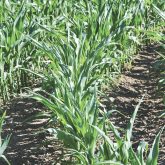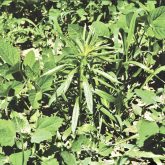What’s the best strategy for defeating one of your toughest competitors, glyphosate-resistant Canada fleabane?
I will dedicate three columns to this important question, since it requires a different strategy for each crop.
Let’s start out by digging more deeply into one of the more common statements being made about the management of Canada fleabane, namely, that it can be controlled easily in the fall or before planting in the spring with aggressive tillage.
I’m guilty of making this statement, but with experience I have found it to be both true and false. Tillage will work if fleabane rosettes are small, about 7.5 cm (three in.) in diameter, and there are only a few of them. However, your success controlling fleabane with most tillage implements will decline as the rosette gets larger in diameter — more than 12.5 cm (five in.) — or even if the rosettes are small but they are in a cluster.
Read Also

Sensing the soil: Root cell research finds ‘stress hormone’
Research into how root cells react to soil stressors could help plants better adapt to changes in their climate.
A tillage demonstration this past year illustrates these points. Prior to working the field, I took photos of the size of fleabane plants and their root structure. As you can see in the first image, the smaller rosette has a much smaller taproot with hardly any secondary roots, while the larger rosette has a much larger taproot with more secondary roots. The vertical-tillage implement was very effective at uprooting the fleabane rosettes but the larger plants and clusters of smaller plants held on to a significant amount of soil.
From the Grainews website: How to use a deep ripper
When I returned to the site one week later, the small and sparsely distributed rosettes were dead, while the large and small clustered rosettes were healthy with new root growth entering the undisturbed soil. The contrast in results is shown in the second image.
The bottom line is that your tillage operation will have to do a good job at removing root-to-soil contact. Otherwise the chance of regrowth is high. This is more easily accomplished in fields with lower weedy plant densities and when the rosettes are small.
In the next #PestPatrol, we’ll look at the options for successful control in cereals.
Have a question you want answered?
Hashtag #PestPatrol on twitter.com to @cowbrough or email Mike at [email protected].















